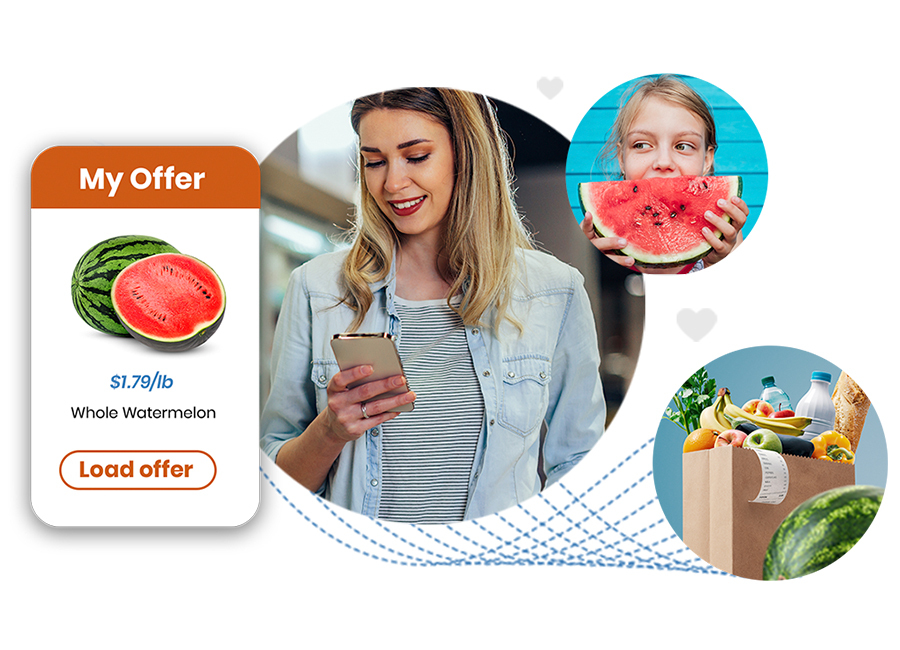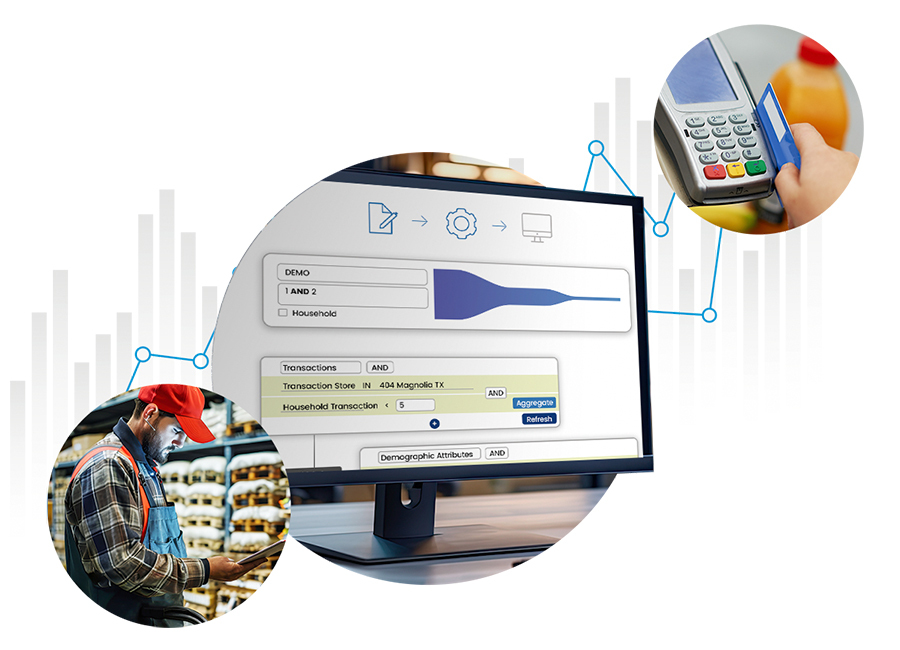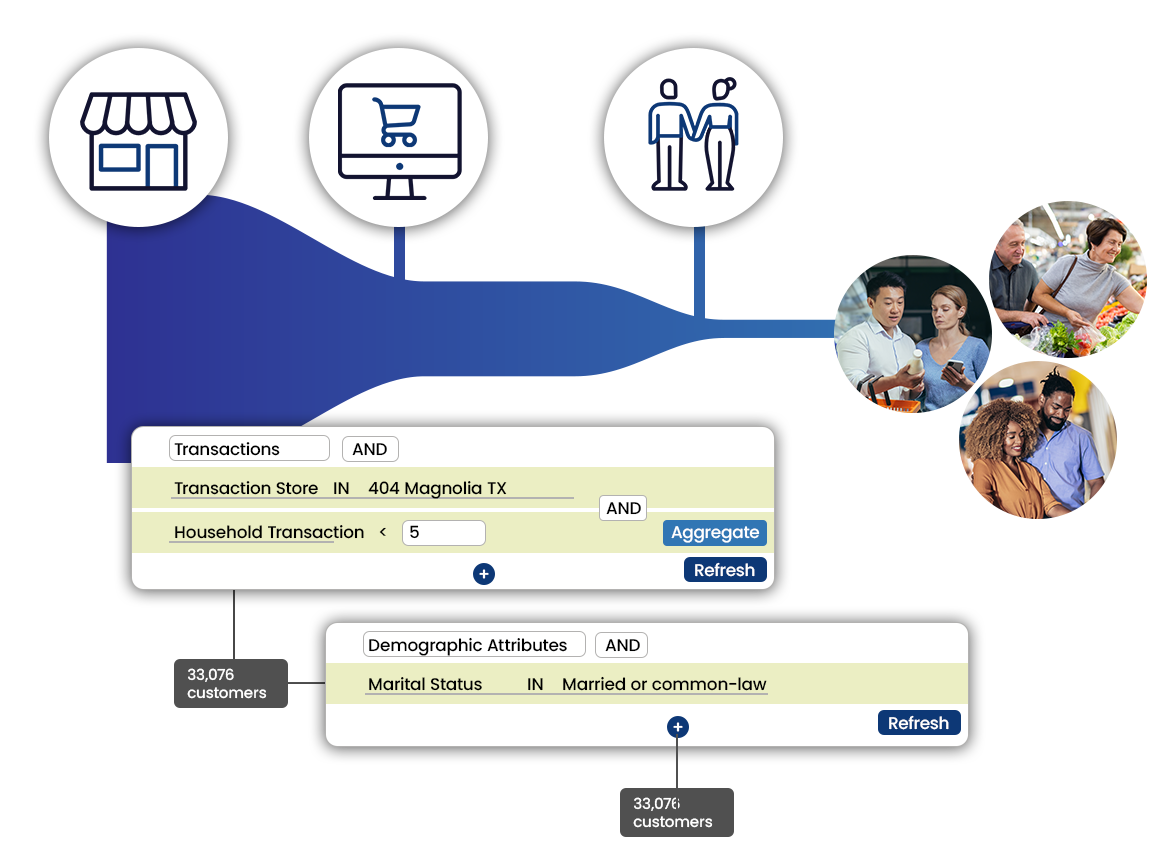Introduction
Grocery personalization is a cutting-edge approach in the retail industry that leverages advanced technologies to customize the shopping experience to individual customer preferences and behaviors. This strategy uses personalization technology to analyze customer data and provide personalized recommendations, offers, and shopping experiences that meet the unique needs of each shopper.
Grocery personalization has become crucial due to the increasing demand for customized shopping experiences. Customers today expect more than just generic service; they want interactions and offerings that resonate with their personal preferences and shopping habits. By implementing grocery personalization strategies, retailers can significantly enhance the shopping experience, boost customer loyalty, and drive higher sales and retention rates.
This personalized approach not only improves customer satisfaction but also provides retailers with valuable insights into consumer behavior, enabling them to refine their personalization algorithms and deliver even more targeted and effective marketing campaigns. As a result, grocery personalization is not just a trend but a vital component of a successful retail strategy in today's competitive market.
Explanation of Grocery Personalization
Grocery personalization is the practice of customizing the grocery shopping experience to match the unique preferences and needs of individual customers. This process involves using personalization technology to analyze customer data and deliver personalized recommendations, targeted promotions, and customized shopping experiences. By implementing grocery personalization, retailers can enhance customer satisfaction, increase loyalty, and drive sales.

Key Elements Involved
By incorporating these technologies and practices, grocery retailers can offer a shopping experience that meets customer expectations. This approach to grocery personalization builds strong customer relationships and increases satisfaction.
Grocery personalization starts with gathering and analyzing customer data. Retailers collect data from various sources such as online shopping behaviors, in-store purchases, and loyalty programs. This data provides insights into customer preferences and shopping patterns.
Contextualized Commerce
Contextualized commerce integrates shopping opportunities into daily activities. By understanding the context in which customers shop, retailers can offer relevant deals and recommendations.
- Sending a snack discount: Offering a discount on snacks when a customer browses party recipes can increase sales.
- Offering seasonal items: Providing seasonal items during specific times of the year enhances the shopping experience.
- Recommending complementary products: Suggesting items that complement current purchases boosts customer satisfaction.
Grocery Ecommerce Software
Modern grocery ecommerce software includes personalization features. These platforms manage and deploy personalized content across websites, mobile apps, and in-store kiosks.
- Integrating with customer data platforms: Ensures all customer interactions are personalized.
- Ensuring consistent experience across all channels: Provides a seamless shopping journey.
- Managing personalized content and offers: Helps in delivering relevant recommendations and promotions.
Data-Driven Personalization
Data-driven personalization uses analytics to guide personalization efforts. By monitoring customer interactions, retailers adjust strategies to meet customer needs better.
- Continuous analysis of customer behavior: Regularly analyzes data to keep up with changing preferences.
- Updating offers based on recent data: Keeps the content relevant and timely.
- Ensuring relevance and timeliness of content: Provides customers with the most appropriate recommendations.
In today's market, delivering a personalized shopping experience is essential for maintaining customer loyalty and driving sales.
Benefits of Personalizing Grocery Shopping
Grocery personalization brings numerous advantages to both customers and retailers. By leveraging personalization technology, retailers can create a more engaging and efficient shopping experience. Grocery personalization not only enhances the shopping experience but also drives loyalty and operational excellence. Here are some of the key benefits:
Enriched Customer Experience
Personalizing the grocery shopping experience enhances the overall customer journey. When shoppers receive personalized recommendations and targeted offers, they feel valued and understood.
- Tailored Product Recommendations: Personalized suggestions based on past purchases and preferences improve the shopping experience.
- Relevant Promotions and Discounts: Offering deals that match customer interests increases the likelihood of purchases.
- Convenient Shopping Journey: A seamless, customized experience saves time and effort for customers.
Increased Customer Loyalty and Retention
By providing a personalized shopping experience, retailers can foster stronger relationships with their customers. Customer personalization helps build loyalty and encourages repeat business.
- Enhanced Customer Satisfaction: Satisfied customers are more likely to return and recommend the store to others.
- Loyalty Programs: Personalized loyalty programs with tailored rewards increase customer engagement.
- Consistent Interaction: Regularly personalized interactions keep customers engaged and coming back.
Improved Operational Efficiency
Grocery personalization also benefits retailers by streamlining operations and improving efficiency. By utilizing data-driven personalization, retailers can optimize their marketing strategies and resource allocation.
- Efficient Inventory Management: Understanding customer preferences helps in stocking the right products.
- Targeted Marketing Campaigns: Personalized campaigns are more effective and cost-efficient.
- Reduced Wastage: Accurate predictions of customer needs reduce overstock and wastage.
By focusing on these benefits, retailers can create a more profitable and customer-centric business model.
Top Technologies in Grocery Personalization
Grocery personalization relies on several advanced technologies to create a customized shopping experience. These technologies enable retailers to analyze customer data, predict preferences, and deliver personalized recommendations and offers.
AI in Grocery Personalization
Artificial Intelligence (AI) plays a crucial role in grocery personalization. It processes vast amounts of customer data to provide real-time insights and recommendations. AI systems can analyze customer behavior and preferences instantly, allowing for immediate personalization.
- Behavioral Predictions: AI predicts future customer actions based on past behavior, helping retailers anticipate needs and preferences.
- Enhanced Customer Interaction: AI-powered chatbots and virtual assistants offer personalized assistance, improving the shopping experience.
Data Based Personalization
Data-driven personalization uses customer data to create targeted and relevant shopping experiences. By leveraging this data, retailers can understand and cater to individual preferences.
- Customer Segmentation: Analyzing data to group customers based on similar behaviors and preferences.
- Targeted Marketing Campaigns: Using insights from customer data to design marketing strategies that resonate with specific segments.
- Personalized Offers: Delivering discounts and promotions tailored to individual shopping habits.
Personalization Algorithms
Personalization algorithms are the backbone of grocery personalization. They use complex mathematical models to process data and generate personalized recommendations. Algorithms learn from customer data to improve the accuracy of recommendations over time. Suggesting products based on the preferences of similar customers.
- Content-Based Filtering: Recommending products that share attributes with items the customer has shown interest in.
- Predictive Analytics: Algorithms predict what products customers might be interested in based on their shopping history.
- Dynamic Pricing: Adjusting prices in real-time based on customer demand and competition.
- Customer Lifetime Value (CLV) Prediction: Estimating the long-term value of customers to tailor marketing efforts effectively.
By integrating these key technologies, retailers can significantly enhance their grocery personalization efforts. These technologies not only improve the shopping experience but also drive customer loyalty and increase sales.
How AI is Transforming Grocery Personalization
AI in grocery is a game-changer for personalizing the shopping experience. It utilizes vast amounts of data to understand customer preferences and behaviors, enabling retailers to offer highly customized experiences. By developing AI, retailers can significantly improve the effectiveness of their personalization technology. This leads to better customer experiences, increased loyalty, and higher sales.

Role of AI and Machine Learning in Personalizing Grocery Shopping
AI and machine learning are at the heart of grocery personalization. These technologies analyze customer data in real-time to deliver relevant and timely recommendations.
- Data Analysis: AI processes large volumes of customer data, including purchase history and browsing behavior, to identify patterns and preferences.
- Real-Time Personalization: AI algorithms adjust recommendations and offer on the fly, ensuring customers receive the most relevant suggestions during their shopping journey.
- Predictive Analytics: Machine learning models predict future customer behaviors and preferences, allowing retailers to anticipate needs and stock accordingly.
Illustrations of AI-Driven Personalization
AI-driven personalization takes many forms, each enhancing the shopping experience in unique ways. AI suggests products based on individual shopping habits and preferences, increasing the likelihood of purchases. Using AI to monitor inventory levels and automatically reorder products that are popular among specific customer segments.
- Dynamic Pricing: AI adjusts prices in real-time based on demand, competition, and customer profiles to maximize sales and customer satisfaction.
- Targeted Marketing Campaigns: AI tailors marketing messages to specific customer segments, improving engagement and conversion rates.
- Personalized Emails: Sending customized product recommendations and offers to customers based on their shopping history.
- AI-Powered Chatbots: Providing instant assistance and personalized product suggestions to customers during their online shopping experience.
The integration of AI in grocery personalization is a critical component in meeting the evolving demands of today's consumers.
Enriching Customer Experience with Personalized Grocery Shopping
Grocery personalization significantly enhances the customer experience by aligning shopping experiences with individual preferences and behaviors. This leads to greater satisfaction and loyalty, as customers feel more valued and understood. By enriching the customer experience with personalized grocery shopping, retailers can drive significant improvements in customer satisfaction and loyalty.
Impact on Customer Preferences and Consumer Behavior
Personalized grocery shopping has a profound impact on customer preferences and consumer behavior. By offering tailored experiences, retailers can influence buying patterns and foster a deeper connection with their customers.
- Enhanced Shopping Satisfaction: Customers enjoy a more relevant shopping experience, which increases their overall satisfaction.
- Increased Purchase Frequency: Personalized recommendations and offers encourage customers to shop more often.
- Stronger Brand Loyalty: When customers feel understood and valued, they are more likely to remain loyal to the brand.
Successful Implementations
Numerous retailers have successfully implemented grocery personalization strategies, leading to remarkable improvements in customer engagement and sales. A regional supermarket chain introduced a loyalty program that used data-driven personalization to offer tailored rewards and promotions. This program saw a significant increase in customer retention and a rise in average transaction value.
- Large Retail Chain: A large retail chain could use personalized email campaigns to target specific customer segments with relevant product recommendations and discounts. This would lead to an increase in email open rates and a boost in sales.
- Regional Supermarket: Personalized emails offering discounts on frequently purchased items would lead to an increase in customer engagement.
- Online Grocery Store: An online grocery store implementing AI-powered recommendations on its website would provide its customers with personalized product suggestions based on their browsing and purchase history, leading to an increase in average order value.
- E-commerce Platform: AI-driven recommendations for new and trending products woul result in an increase in conversion rates.
- National Grocery Chain: Implementing a points-based loyalty program with personalized rewards would increase repeat customers.
The successful implementation of personalization technology and strategies highlights the potential for retailers to create more meaningful and profitable relationships with their customers.
The Future of Grocery Personalization: Trends and Innovations
The future of grocery personalization is bright, with new trends and innovations continuously emerging. These advancements are set to revolutionize the way retailers engage with their customers, offering even more personalized and efficient shopping experiences. By embracing these trends and innovations, retailers can stay ahead in the competitive market.
Emerging Trends in Grocery Personalization
Several trends are shaping the future of grocery personalization. These trends focus on enhancing customer engagement and improving the overall shopping experience. The rise of voice-activated devices allows customers to shop using voice commands, making the shopping experience more convenient and personalized. Future e-commerce platforms will integrate various aspects of the retail ecosystem, from supply chain management to customer relationship management, ensuring a seamless and personalized shopping experience.
- Augmented Reality (AR): AR enables customers to visualize products in their homes before purchasing, offering a more interactive and personalized shopping experience.
- Hyper-Personalization: Utilizing real-time data and advanced algorithms, hyper-personalization delivers highly specific and relevant recommendations to customers.
- Sustainability Focus: Personalizing recommendations to include sustainable and eco-friendly products based on customer preferences.
Predictions for the Future of Grocery Ecommerce Software
The evolution of grocery ecommerce software will continue to enhance personalization capabilities, making the shopping experience even more intuitive and customer-centric.
- Advanced Analytics: The use of advanced analytics will grow, enabling retailers to gain deeper insights into customer behavior and preferences, and thus offer more precise personalization.
- AI and Machine Learning: AI and machine learning will become even more sophisticated, providing real-time personalization and predictive analytics to anticipate customer needs.
- Omnichannel Personalization: Ensuring a consistent personalized experience across all channels, including online, mobile, and in-store.
The future of grocery personalization promises to offer even greater convenience and satisfaction to customers while providing retailers with the tools they need to build strong, lasting customer relationships.
Conclusion
Grocery personalization develops advanced technologies such as AI, data-driven personalization, and personalization algorithms to create tailored shopping experiences that align with individual customer preferences. This approach enriches customer satisfaction, increases loyalty, and improves operational efficiency for retailers. The use of personalization technology in grocery shopping is essential in today's competitive market, as it not only meets but exceeds customer expectations, fostering deeper customer relationships and driving long-term business success.
Frequently Asked Questions
What is Grocery Personalization?
Grocery personalization is the practice of customizing the shopping experience to meet the unique preferences and needs of individual customers using personalization technology to analyze customer data and deliver tailored recommendations, offers, and shopping experiences.
How Does Grocery Personalization Improve Customer Experience?
Grocery personalization enhances the customer experience by providing personalized recommendations and targeted promotions, which make shopping more relevant, convenient, and enjoyable. This leads to increased satisfaction and stronger customer loyalty.
What Technologies Are Used in Grocery Personalization?
Key technologies used in grocery personalization include AI for real-time data analysis, data-driven personalization to create relevant shopping experiences, personalization algorithms to generate tailored recommendations, and grocery e-commerce software to manage and deploy personalized content.
How Can AI Enhance Grocery Personalization?
AI enhances grocery personalization by processing vast amounts of data quickly and accurately, delivering real-time personalized recommendations, predicting future customer preferences, and providing enhanced customer interactions through tools like AI-powered chatbots.
What Are the Benefits of Personalized Grocery Shopping?
Personalized grocery shopping benefits customers by offering customized recommendations, improving satisfaction, and saving time. For retailers, it increases sales, boosts customer loyalty, and improves operational efficiency.




